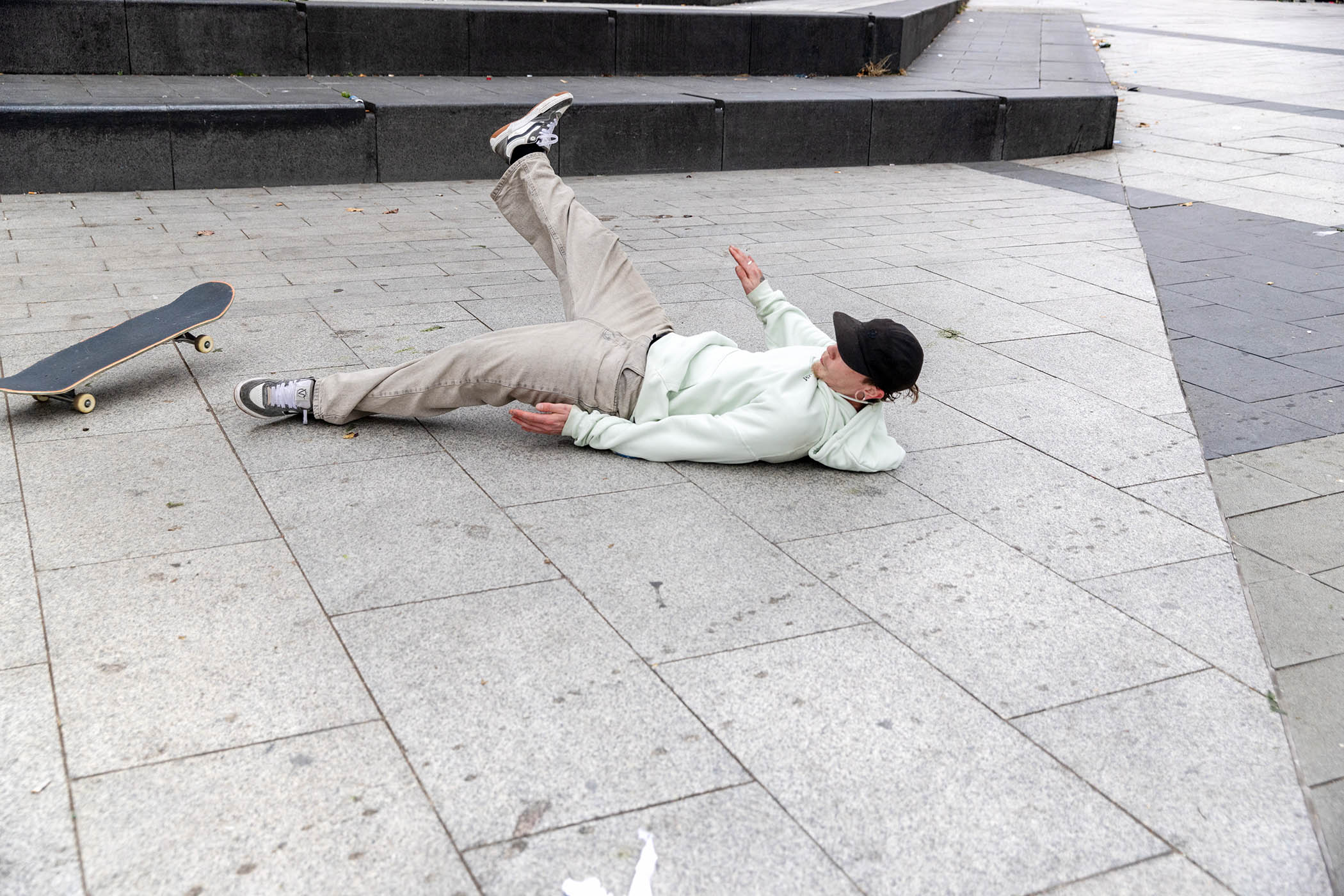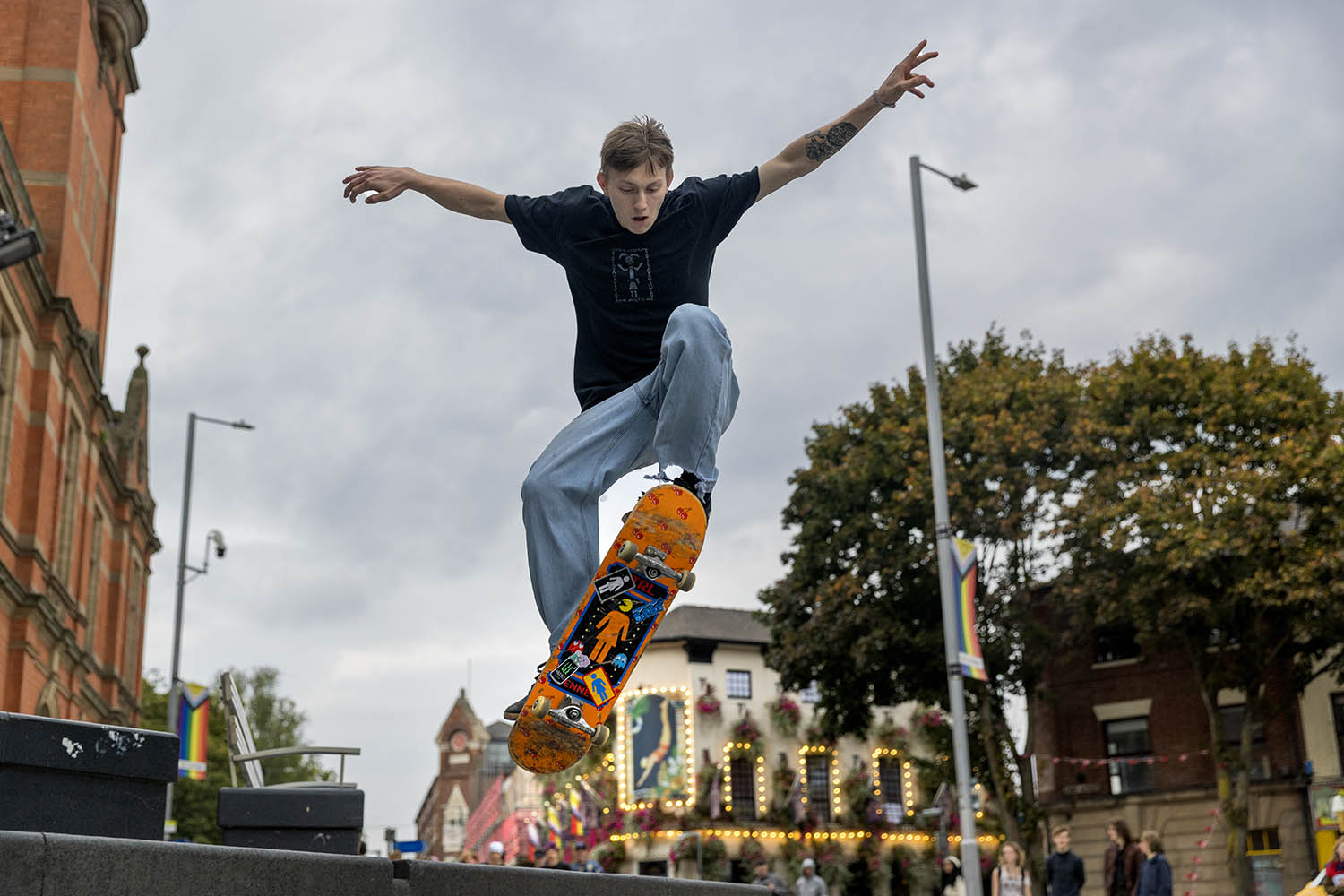Photographs by Gary Calton for The Observer
Almost 90% of skateboarding is falling over. Stand at the edge of your local skatepark and, to the uninitiated, it might look like chaos. People going in different directions, everyone trying a different trick, boards flying all over the place. How does anyone watching this who doesn’t skate make sense of it all?
Two new skateboarding leagues announced this autumn are betting big that they can do just that and transform skateboarding into a spectator sport.
Skateboarding is the latest sport to see the investment of venture capitalists partnering with a group of famous athletes with the promise of shaking up existing formats. With higher earnings for those competing as well as those investing, these leagues are often promoted as putting the athlete first. But will these changes actually benefit skateboarding?
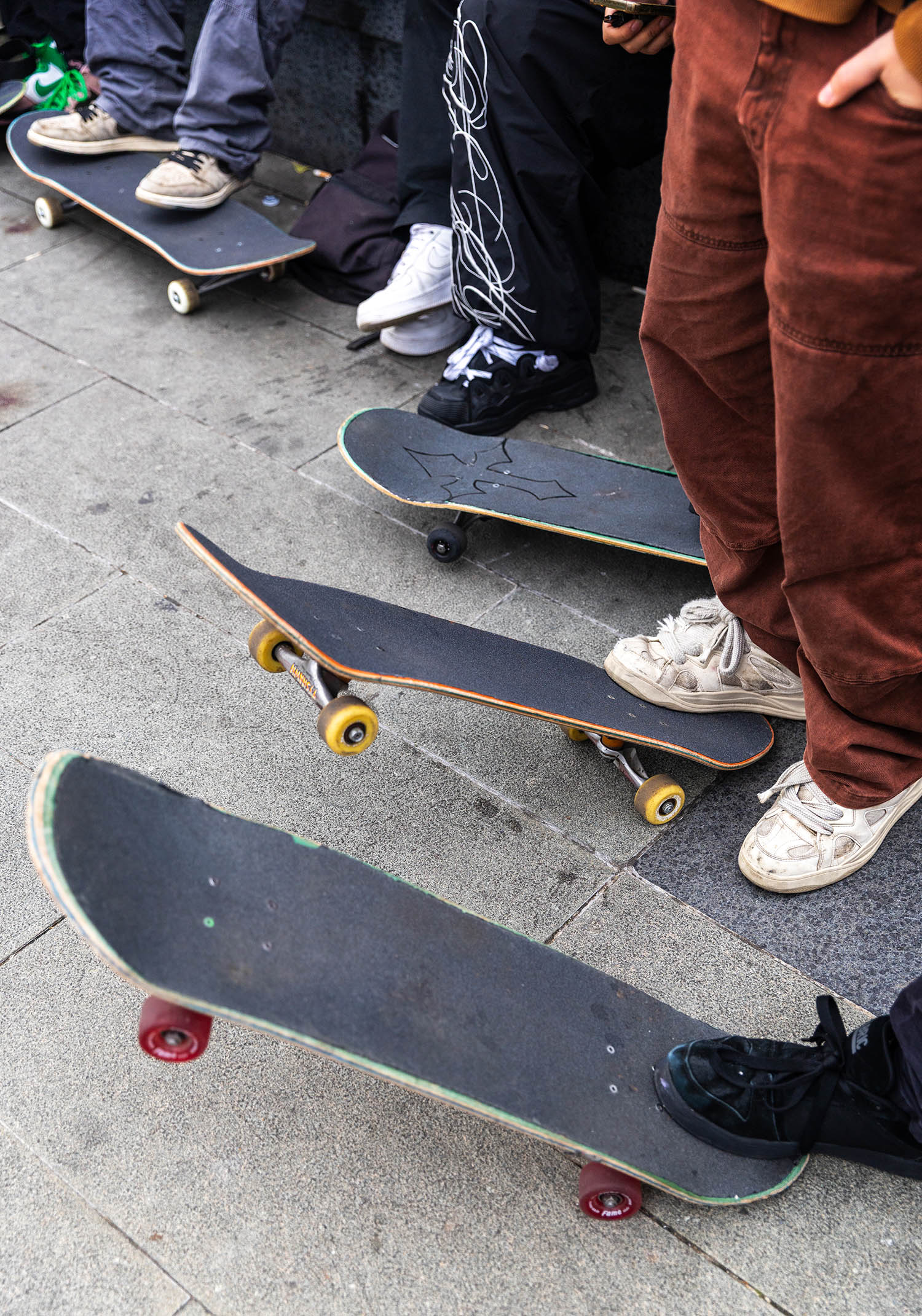
According to their “full visual rebrand”, the X Games is going “all in” on a new model for showcasing skateboarding, launching next summer. Following a 2022 majority acquisition by MSP Sports Capital, its objective is to reach a wider audience through online streaming. To appeal to more people, it is trying to shape skateboarding into more familiar sporting terms: a league format (the X Games League or XGL), city-based teams, merchandising and hammed-up rivalries between competitors. It wants to encourage fantasy leagues and sports betting, and it plans to do all this through more standardised scoring using an AI-powered judge. A “Tony Hawk-Eye”, if you will.
Another league slated to start in California next summer, the Skate Board Association, is modelled after other US leagues, even contorting the name so that its acronym, the SBA, echoes the likes of the NBA and NFL. Founded by basketball star Gary Payton II, the SBA has six teams, each with three men and three women, has signed up 18 athletes and promises six-figure salaries for the top draft picks.
However, skateboarders are sceptical. “Unlike other sports, competition is simply not endemic to skateboarding,” says skateboarder and author Kyle Beachy. “If you look at the efforts over time to codify skateboarding into a contest format, you’ll find behind them some group or other trying to make a buck. This uniformly has not worked, and it might be worth asking why not.”
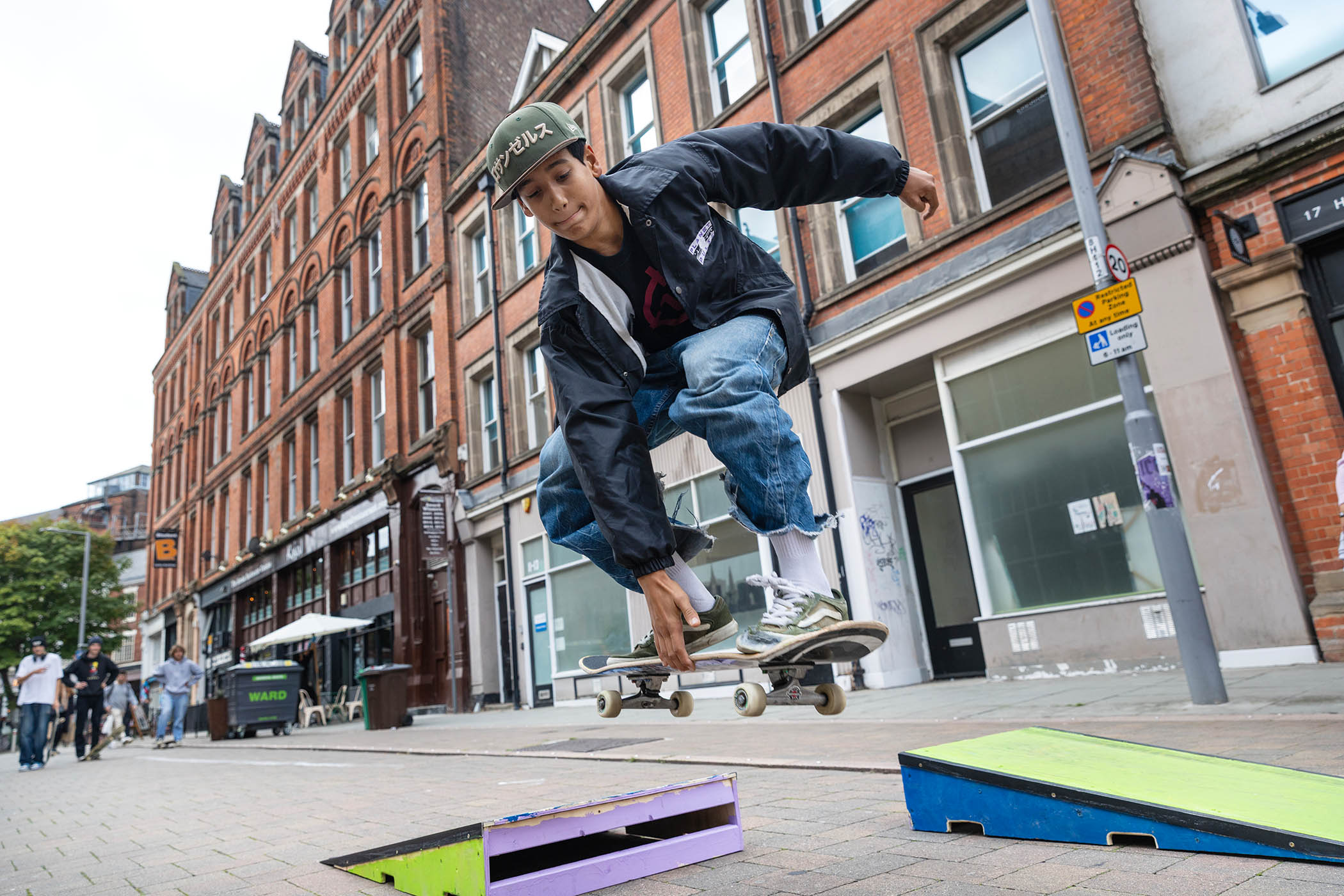
In the air outside People’s Hall
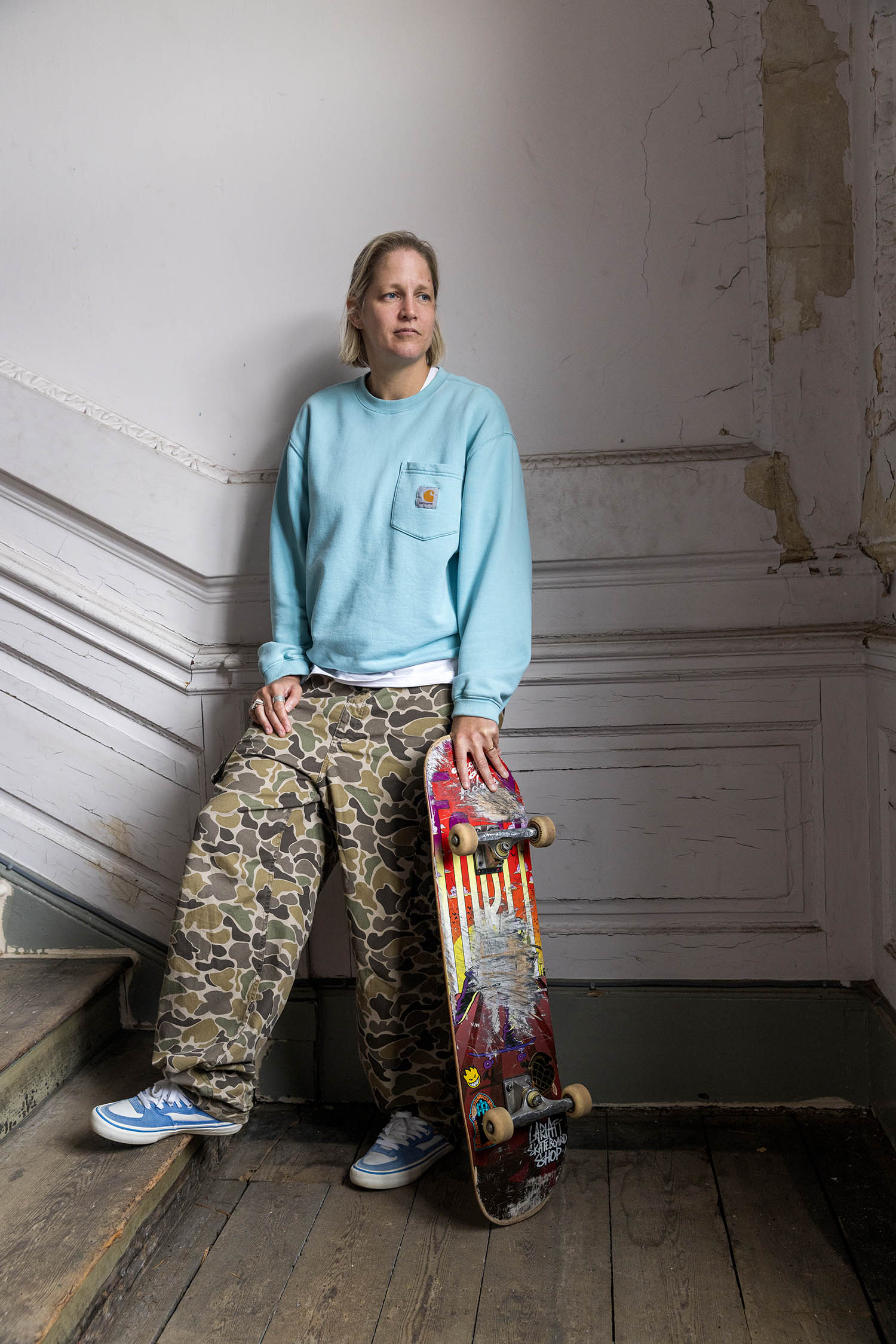
Lucy Adams from Skate GB took part in the Panel talk on ‘Building sustainable skate festivals’.
Financial machinations aside, there are other considerations. In seeking objectivity, these formats are creating a more sterilised version of skateboarding. Ironically, in wanting to “change the game”, they are trying to subvert an already subversive activity, ultimately producing something bland that’s unlikely to appeal to skateboarders themselves.
And what does it mean for anyone who wants to start skateboarding? In many sports, increasing spectator numbers is considered positive. Perversely, through skateboarding becoming more popular as a spectator sport, there’s a risk it could limit participation, as has happened in Japan, where skateboarding is increasingly restricted to sanctioned skateparks.
Skateboarder and PhD student Kai Kagitani says this has intensified since skateboarding made its Olympic debut in Tokyo, despite Japanese skaters winning three out of the four gold medals on offer. Japan has built a record number of skateparks since the Games, but has also introduced more skate-stoppers — knobs on ledges and handrails to prevent skateboarders from grinding them — and more bans on skateboarding in the streets.
Skateboarders have long faced exclusion from public spaces, often with the promise of an alternative, purpose-built space somewhere else as a compromise. The reasons given for exclusion have included supposed noise pollution, property damage and danger to pedestrians. Through skateboarding being presented as something that happens in purpose-built spaces, the public and municipal perception of skateboarding risks solidifying around skateboarding belonging only in skateparks.
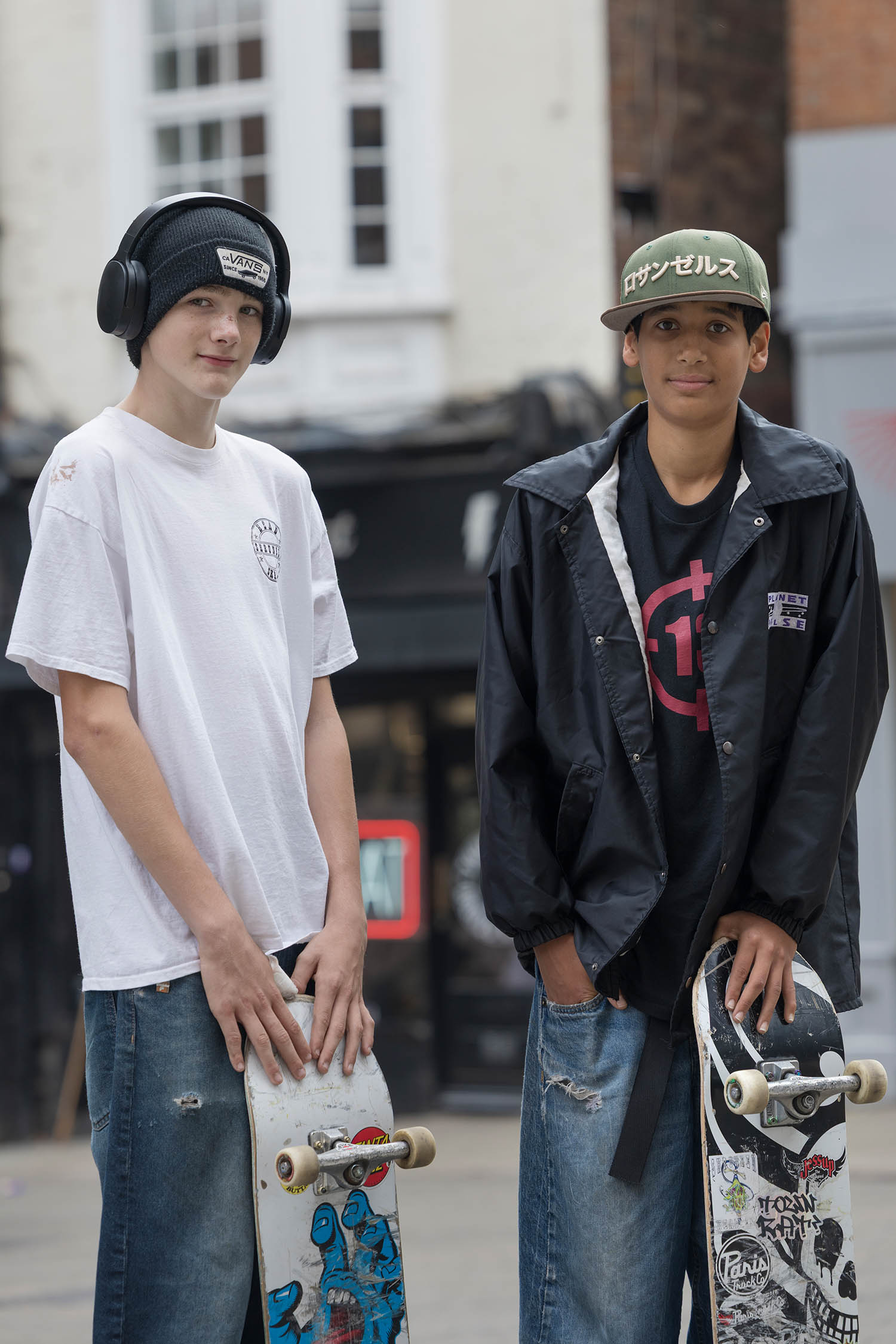
Lucas and Frederick
Skateparks in themselves are no bad thing. But they cost money, require space and are often built on the outskirts. This can lead to fewer people using them and, crucially, fewer people actually seeing skating take place. It doesn’t have to be this way.
“Permissiveness,” says Chris Lawton, co-founder of non-profit Skate Nottingham, “is the way officers from Nottingham City Council have described their approach.” In other words, let skateboarding happen. Initially a decision driven by years of austerity and a lack of funding for investing in youth facilities, the council began working with skateboarders to activate public spaces.
This lower-cost approach has paid dividends. Nottingham is now the leading UK example of “skate urbanism”, the process of incorporating skateboarding into urban-planning decisions. There is a wealth of academic research emphasising the benefits of skateboarding for the city and a growing network of cities and skateboarders sharing best practice. Skateboarders are keen to exercise their agency in decisions about who can skate where. The work these skateboarders do is a form of community organising, slow and methodical. In Bordeaux, they call it mediation.
Beyond benefits to the city, the true value of skateboarding happening in the public realm is access. Someone might stumble on a session at Nottingham’s Sneinton Market and take their own first step onto a board right there.
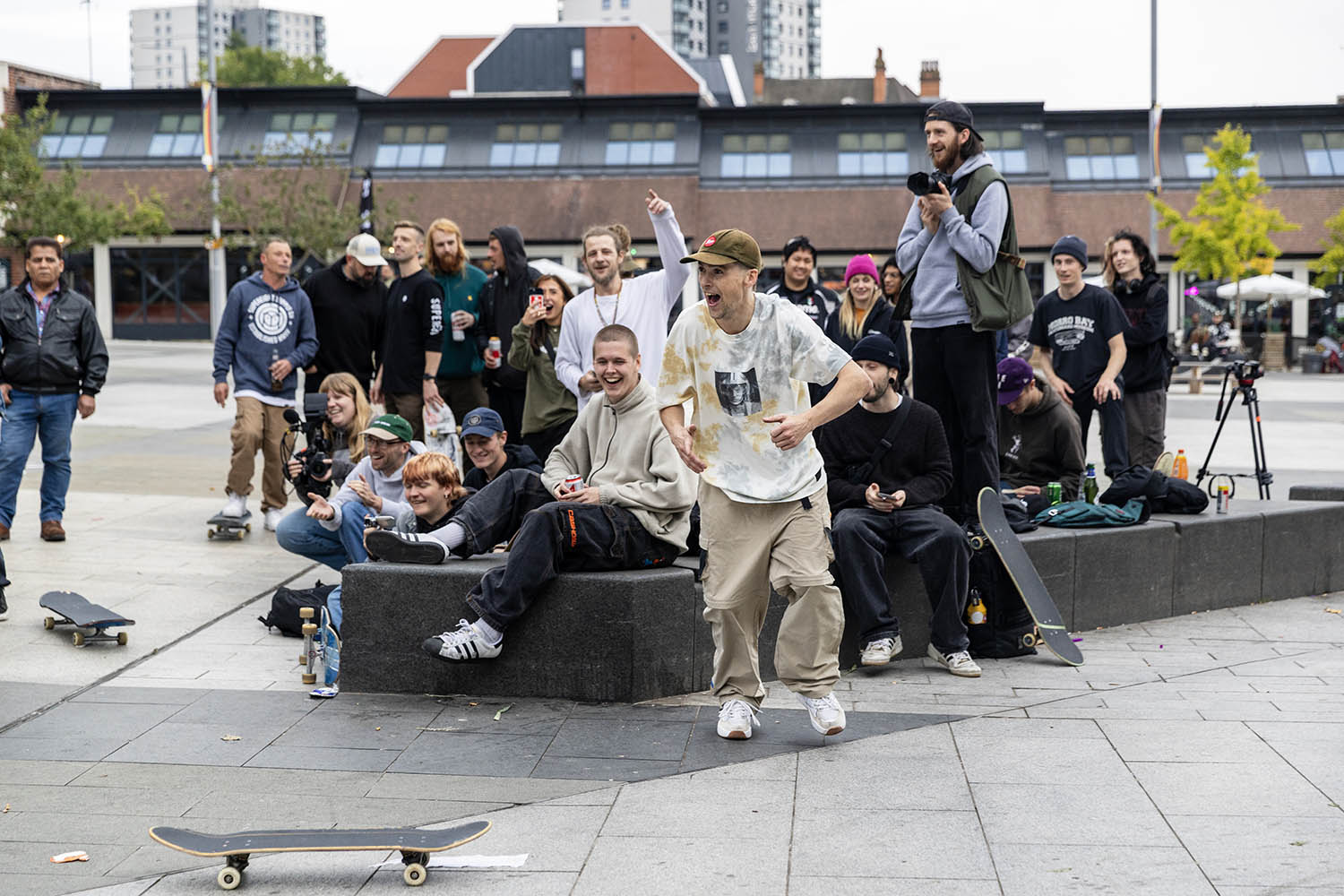
MC Nay Symes challenging you to some best tricks
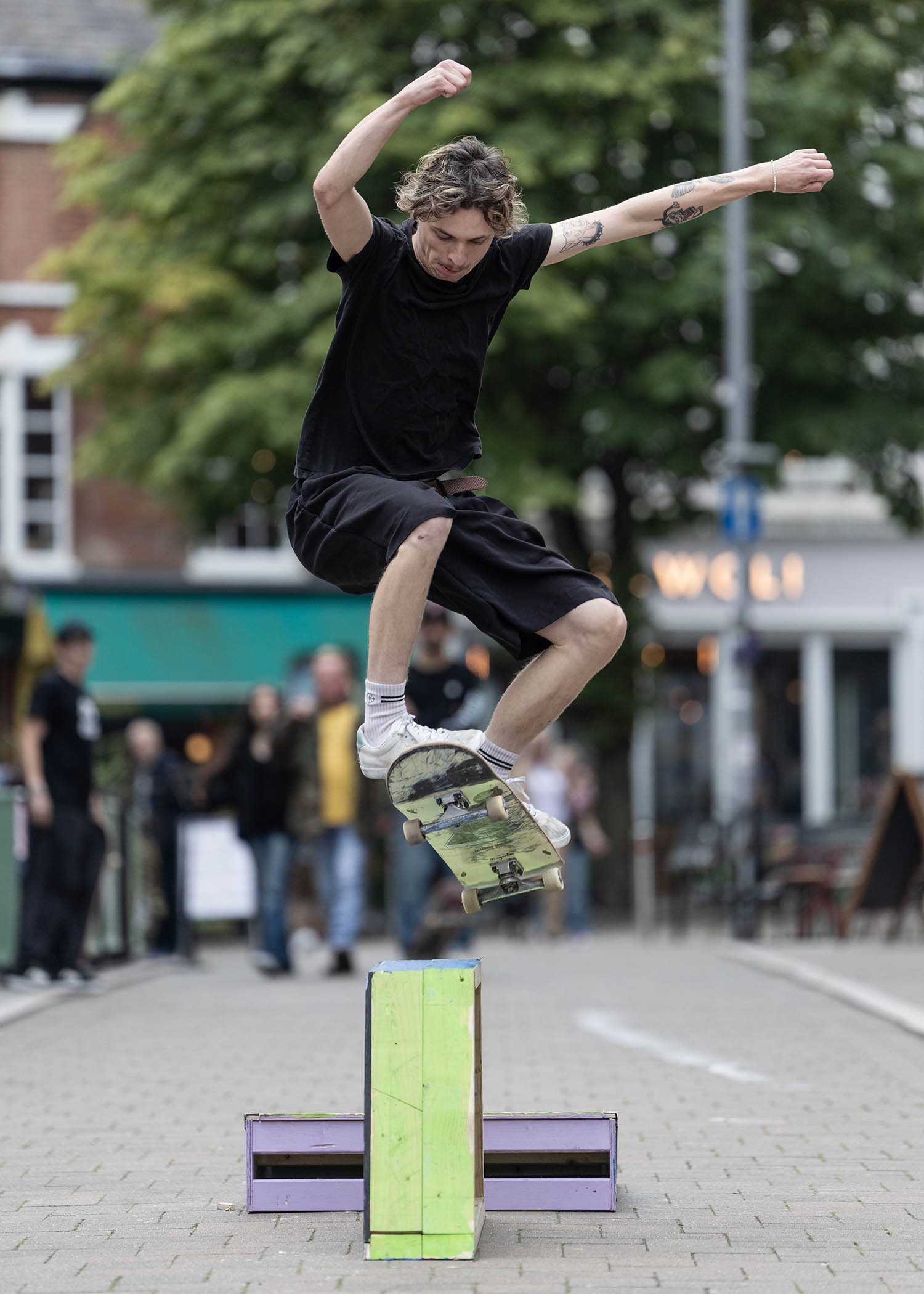
Outside People’s Hall
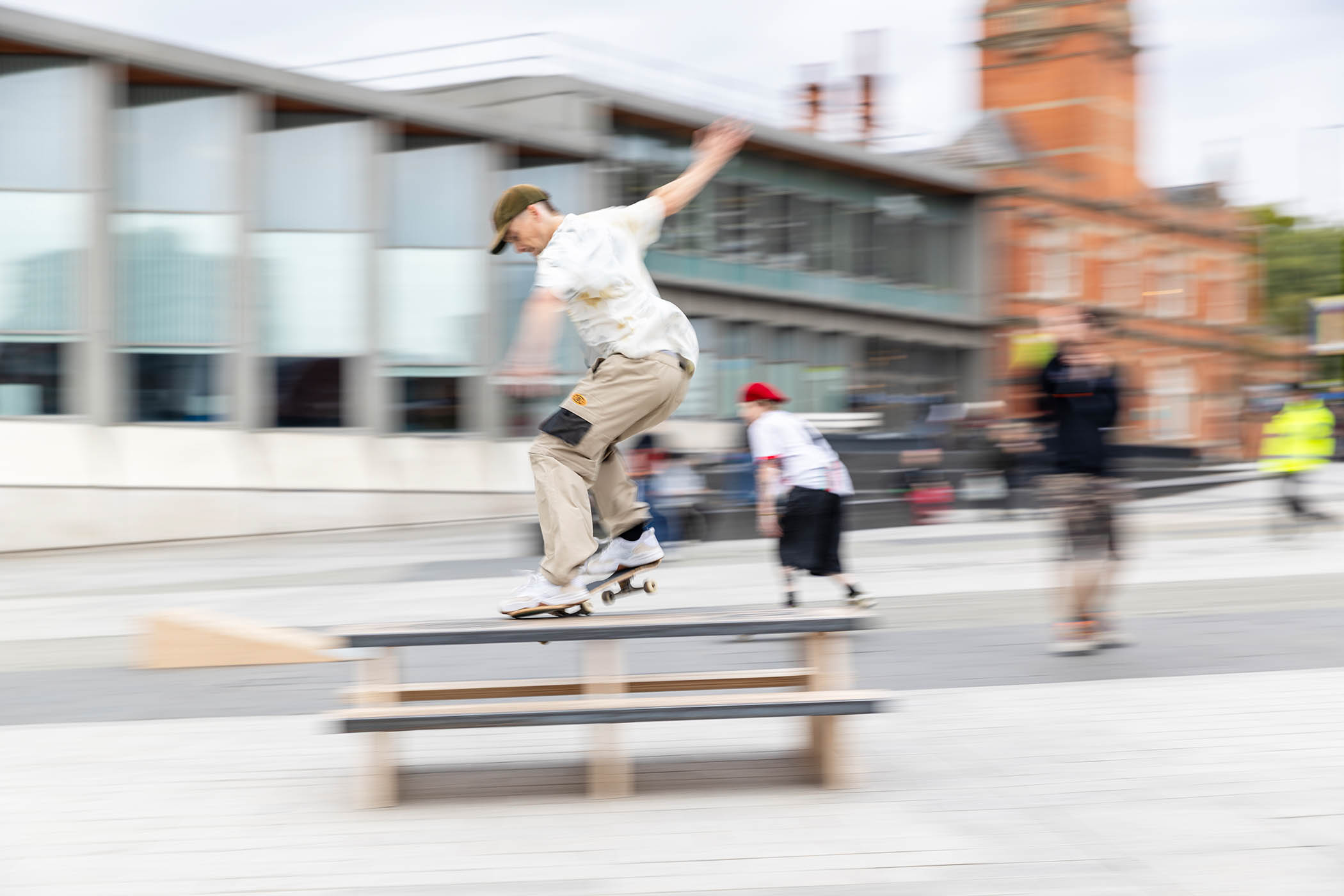
MC Nay Symes
Which brings us back to the money. Skate Nottingham’s recent “Skateboarding in the City” festival was primarily funded by a grant from the National Lottery (which in turn helped leverage further investment) – the equivalent of a fraction of the promised salary of one athlete in the proposed new leagues.
This funding, secured by skaters themselves, enabled approximately 500 people to participate in free activities across the city, with at least that same number getting to see the spectacle. All at little to no cost to the city.
“It’s smaller scale, but more tangible and sustainable,” says Lawton. “Seeing, hearing and physically feeling a stomped 360 flip – performed somewhere familiar to you – will have a much greater impact on participation than views over a screen.”
